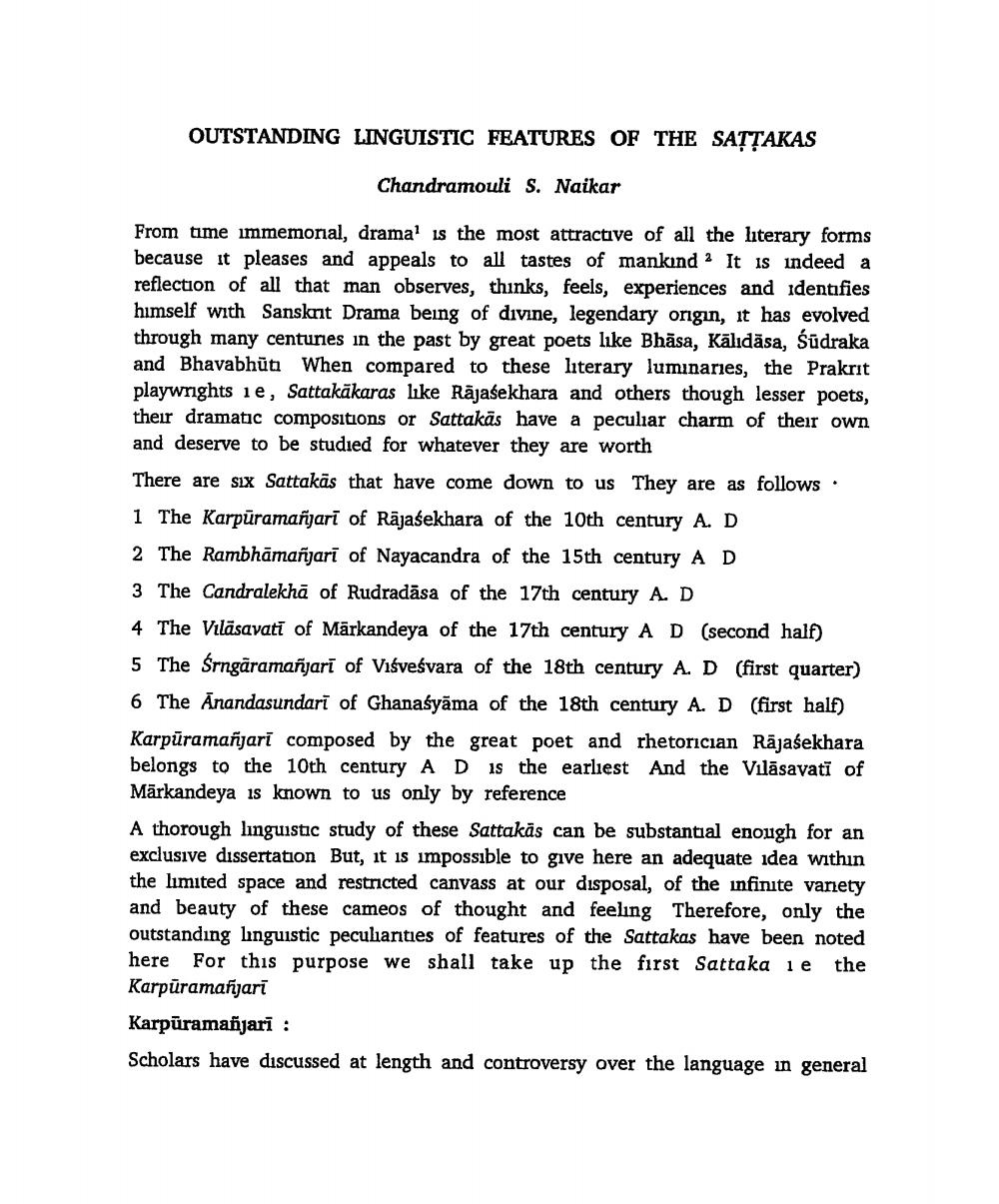________________
OUTSTANDING LINGUISTIC FEATURES OF THE SATTAKAS
Chandramouli S. Naikar
From time immemorial, drama' is the most attractive of all the literary forms because it pleases and appeals to all tastes of mankind 2 It is indeed a reflection of all that man observes, thinks, feels, experiences and identifies himself with Sanskrit Drama being of divine, legendary origin, it has evolved through many centuries in the past by great poets like Bhāsa, Kālidāsa, Śūdraka and Bhavabhuti When compared to these literary luminaries, the Prakrit playwrights ie, Sattakākaras like Rajasekhara and others though lesser poets, their dramatic compositions or Sattakās have a peculiar charm of their own and deserve to be studied for whatever they are worth
There are six Sattakäs that have come down to us They are as follows
1 The Karpūramañjarī of Rajasekhara of the 10th century A. D
2 The Rambhāmañjarī of Nayacandra of the 15th century A D
3 The Candralekha of Rudradāsa of the 17th century A. D
.
4 The Vilasavati of Märkandeya of the 17th century A D (second half) 5 The Śrngāramañjarī of Visvesvara of the 18th century A. D (first quarter) 6 The Anandasundari of Ghanaśyama of the 18th century A. D (first half) Karpūramañjarī composed by the great poet and rhetorician Rajasekhara belongs to the 10th century AD is the earliest And the Vilasavati of Märkandeya is known to us only by reference
A thorough linguistic study of these Sattakās can be substantial enough for an exclusive dissertation But, it is impossible to give here an adequate idea within the limited space and restricted canvass at our disposal, of the infinite variety and beauty of these cameos of thought and feeling Therefore, only the outstanding linguistic peculiarities of features of the Sattakas have been noted here For this purpose we shall take up the first Sattaka ie the Karpūramañjarī
Karpūramañjarī:
Scholars have discussed at length and controversy over the language in general




